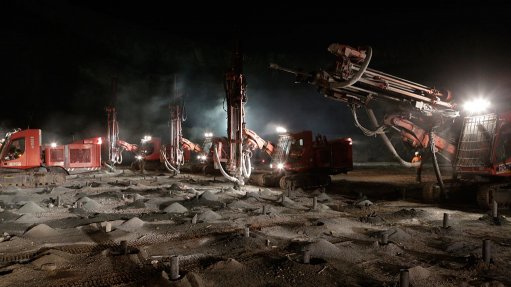
Name: Sabodala mine.
Location: The Sabodala mine is located 650 km east of the Senegalese capital, Dakar.
Controlling Company: Teranga Gold Corporation’s interests in Senegal are represented by two Senagalese subsidiaries – Sabodala Gold Operations (SGO), which is the operator of the mine and the mill, and Sabodala Mining, which is the exploration company exploring the 1 120 km2 regional land package. The Senegal government has a 10% free carry interest in SGO.
Brief History: The first gold pour at Sabodala took place in March 2009. Canada-based Teranga was created to acquire the Sabodala gold mine and a large regional exploration land package. The company completed the acquisition of certain gold assets from Mineral Deposits through a demerger in November 2010. The company completed its plant expansion to double mill capacity in 2012. In early 2014, Teranga acquired its neighbouring property, the Oromin Joint Venture Group (OJVG) property. With the expansion and acquisition complete, as a base case, Teranga expects to increase average gold production to about 250 000 oz/y at an average all-in sustaining cost of about $1 000/oz for about ten years, with a total reserve life of 16 years.
Brief Description: The Sabodala mine is the only large-scale gold mine to come into operation in Senegal. The mine is situated within the West African Birimian geological gold belt, in a region of Senegal that has only recently been opened for mining and exploration, but has already established itself as significant gold camp with more than ten-million ounces discovered.
Geology/Mineralisation: The Sabodala deposit is situated in the Mako volcanic belt. Locally, the volcanics are intruded by subvolcanic dolerite and gabbro sills and dykes, and quartz feldspar porphyry and rhyolite dykes. Interflow sediments parallel the layering in the sequence. The Sabodala shear zone is about 2 km wide and is identified by a subtle magnetic trend that extends through the 7-km-long permit and transects volcanic stratigraphy. The shear zone plays an integral part in the localisation of gold mineralisation.
The largest and best understood deposit in the company's portfolio of properties is Sabodala, owing to its production status and size and controls on mineralisation. Gold deposits on the adjacent OJVG properties are similar and include primarily high-grade shear vein systems and bulk tonnage, lower-grade mineralisation in carbonate-altered ultramafic rocks along shear zones.
Reserves: Total proven and probable reserves as at December 31, 2013, were estimated at 8.98-million tonnes grading 1.6 g/t gold.
Resources: Total measured and indicated resources as at December 31, 2013, were estimated at 47.23-million tonnes grading 1.31 g/t gold. Inferred resources were 17.88-million tonnes grading 0.94 g/t gold.
Products: Gold.
Mining Method: Mining of the Sabodala openpit is carried out by owner-operated conventional truck-and-shovel openpit mining.
Major Infrastructure and Equipment: The gold extraction process uses a conventional carbon-in-leach flowsheet. The major equipment comprises two-stage crushing with a primary jaw and secondary cone crushing system. This is followed by one semiautogenous mill, transferred into a return pebble crusher, sizer by cyclone and two ball mills. During the leaching process, the gold leaches into solution-in-leach tanks when in contact with cyanide, then adsorbs onto the carbon to liberate gold from the ore before being captured with the activated carbon. After elution and electrolysis, the gold is recovered by fusion and poured into doré bars.
Since the completion of the mill expansion, the nominal capacity of the process plant is estimated at 3.5-million tonnes a year of fresh ore and is expected to exceed four-million tonnes a year, with a blend of 75% fresh and 25% oxidised ore.
Prospects: A second phase of development could increase production to between 400 000 oz/y and 500 000 oz/y. This phase will require a second mill expansion.
Contact Person: VP investor and stakeholder relations Kathy Sipos.
Contact Details:
Teranga,
tel +1 416 594 0000,
fax +1 416 594 0088,
email ksipos@terangagold.com, and
website http://www.terangagold.com.